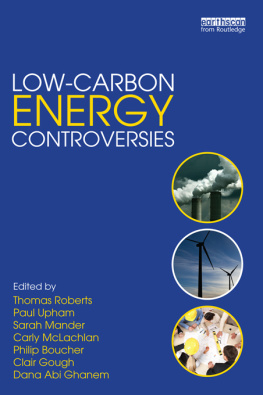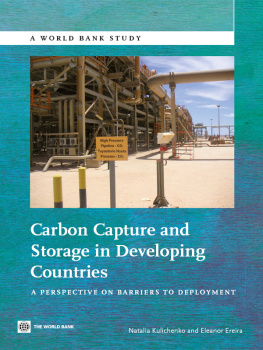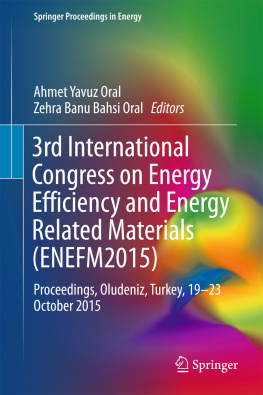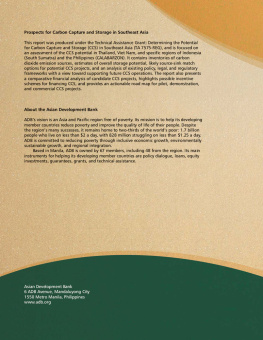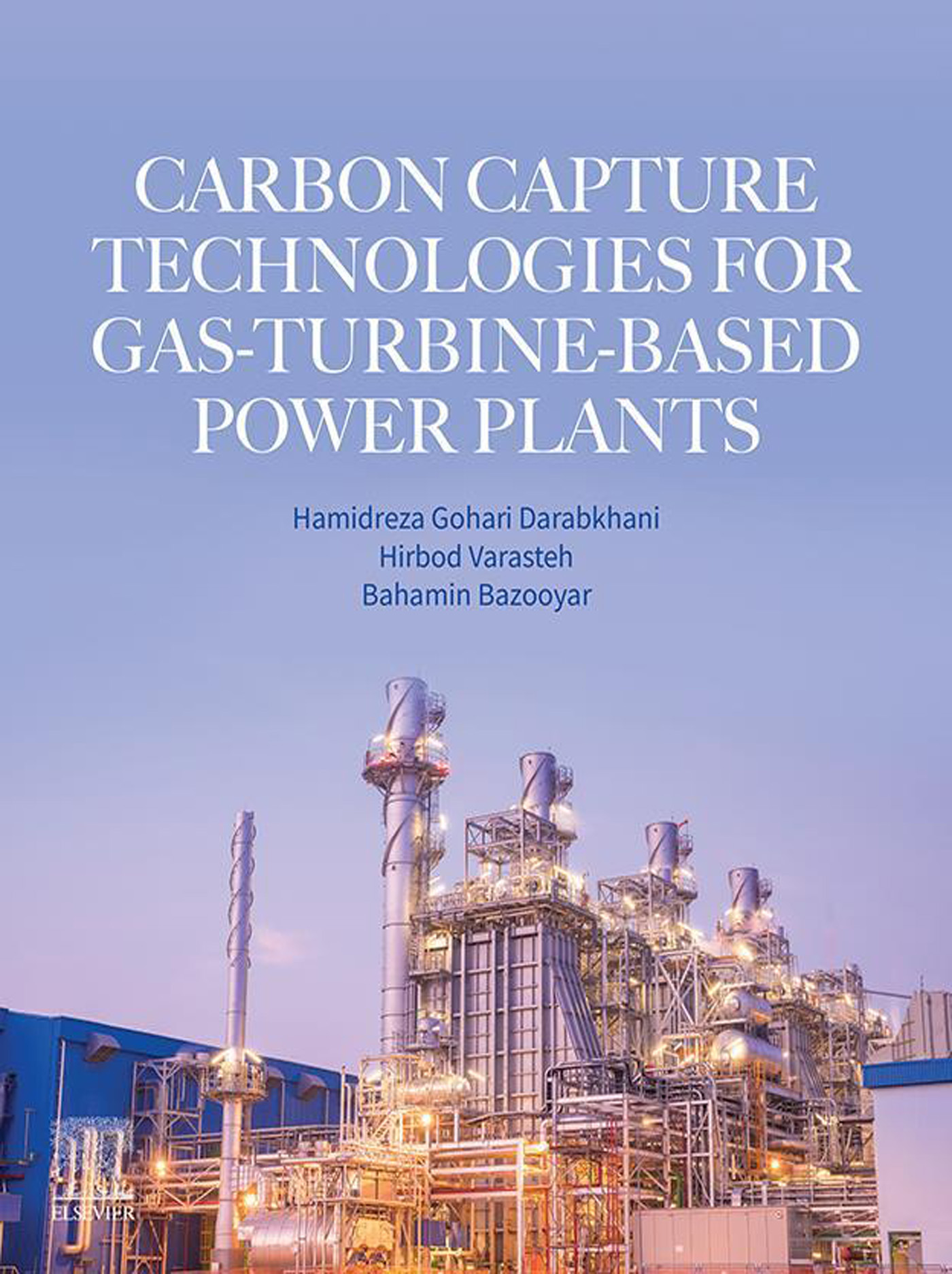Table of Contents
List of tables
- Tables in 1
- Tables in 2
- Tables in 3
- Tables in 4
- Tables in 5
- Tables in 7
List of illustrations
- Figures in 1
- Figures in 2
- Figures in 3
- Figures in 4
- Figures in 5
- Figures in 6
- Figures in 7
Landmarks
Table of Contents
Carbon Capture Technologies for Gas-Turbine-Based Power Plants
Hamidreza Gohari Darabkhani
Low Carbon and Renewable Energy Systems, Staffordshire University, Stoke-on-Trent, United Kingdom
Hirbod Varasteh
Civil Engineering, University of Derby, Derby, United Kingdom
Bahamin Bazooyar
Low-Carbon Energy Systems, Cranfield University, Bedford, United Kingdom

Copyright
Elsevier
Radarweg 29, PO Box 211, 1000 AE Amsterdam, Netherlands
The Boulevard, Langford Lane, Kidlington, Oxford OX5 1GB, United Kingdom
50 Hampshire Street, 5th Floor, Cambridge, MA 02139, United States
Copyright 2023 Elsevier Inc. All rights reserved.
No part of this publication may be reproduced or transmitted in any form or by any means, electronic or mechanical, including photocopying, recording, or any information storage and retrieval system, without permission in writing from the publisher. Details on how to seek permission, further information about the Publishers permissions policies and our arrangements with organizations such as the Copyright Clearance Center and the Copyright Licensing Agency, can be found at our website: www.elsevier.com/permissions.
This book and the individual contributions contained in it are protected under copyright by the Publisher (other than as may be noted herein).
Notices
Knowledge and best practice in this field are constantly changing. As new research and experience broaden our understanding, changes in research methods, professional practices, or medical treatment may become necessary.
Practitioners and researchers must always rely on their own experience and knowledge in evaluating and using any information, methods, compounds, or experiments described herein. In using such information or methods they should be mindful of their own safety and the safety of others, including parties for whom they have a professional responsibility.
To the fullest extent of the law, neither the Publisher nor the authors, contributors, or editors, assume any liability for any injury and/or damage to persons or property as a matter of products liability, negligence or otherwise, or from any use or operation of any methods, products, instructions, or ideas contained in the material herein.
ISBN: 978-0-12-818868-2
For Information on all Elsevier publications visit our website at https://www.elsevier.com/books-and-journals
Publisher: Charlotte Cockle
Acquisitions Editor: Graham Nisbet
Editorial Project Manager: Mica Ella Ortega
Production Project Manager: Kamesh Ramajogi
Cover Designer: Christian J. Bilbow
Typeset by MPS Limited, Chennai, India

Dedication
Dedicated to the loving memory of my father, Mr YAHYA Gohari Darabkhani (19462021), who showed me how to live a simple life with passion and morality.
Hamidreza Gohari Darabkhani
Dedicated to my wife Mrs Hamraz Sahebirashti, my daughter Tida, my mother Shanaz Mirjafari, and my father Mr Mohammadsaeid Varasteh.
Hirbod Varasteh
Dedicated to my mother, Tahereh Salmanian (19562009).
Bahamin Bazooyar
Preface
Clean and sustainable energy supply is one of the strategic needs of countries worldwide. One of the most important parts of energy is electricity, which has a great impact on the energy basket of every country. A large amount of the electricity is provided through conversion of fossil fuels in power plants. It is however vital to limit the emission of greenhouse gases (GHGs) from burning fossil fuels and this can be done by a combination of technologies including carbon capture, improving the efficiencies of power plants, and adapting the renewable energy sources to the power generation systems.
The United Kingdom hosted the 26th UN Climate Change Conference of the Parties (COP26) from 31st October to 13th November 2021 in Glasgow. The summit of COP26 brought parties together to accelerate action towards the goals of the UN Framework Convention and the Paris Agreement on Climate Change. One of the key objectives of the COP26 was the planning on how to achieve the global targets of net zero emissions by 2050. To reach this target, carbon capture and storage (CCS) technologies will be having a big share in removing carbon emissions from the energy sectors and industrial process. From the three main carbon capture technologies (i.e., precombustion, postcombustion, and oxyfuel combustion capture), oxyfuel combustion capture has a high potential to be implemented in both newly designed and retrofitted power plants. Oxyfuel combustion capture involves burning of the fuel with nearly pure oxygen instead of air and recycling some part of the flue gases back into the furnace/boiler to control the flame temperature. The majority of the capture technologies are designed for the atmospheric combustion of the solid fuels (e.g., coal, biomass). When burning natural gas, particularly at elevated pressures, e.g., in gas turbine systems, oxyfuel combustion capture will become a superior option (oxyturbine CCS). The cycle engages recirculation of the flue gases to generate a high concentration of CO2 in the exhaust ready for simple capture and storage. This normally results in full CO2 capture and almost no NOx emission from these power plants. The membrane capture for gas-fired systems is another attractive option for gas turbine power plants. Selective recirculation of the flue gases through the CO2 selective polymeric membranes increases the concentration of CO2 in the flue gases to bring it close to the level of CO2 concentration in the exhaust of the solid fuel combustion to feed a solvent-based postcombustion capture unit.
This book presents Carbon Capture Technologies for Gas-Turbine-Based Power Plants and explores current progress in oxyfuel combustion capture as one of the most capable technologies for carbon capture in power plants. The three major carbon capture technologies (precombustion, postcombustion, and oxyfuel combustion) and the membrane technology are explained in this book, and the pros and cons of each technology are compared with the oxyfuel combustion capture. This book investigates over 20 different oxycombustion turbine (oxyturbine) power cycles, identifying the main parameters with regard to their operation, process, and performance simulations, and energy and exergy analysis. The natural gas combined cycle (NGCC) power plant with postcombustion capture is used as the base-case scenario. One of the challenges of the oxyfuel combustion technology is the need to generate pure oxygen on site. Therefore, the oxygen production and air separation units (ASU) and CO2 compression and purification units (CPU) are explained in this book. The procedure for the design and the operational characteristics of a radial NOx-less oxyfuel gas turbine combustor are presented and the combustor CFD simulation and performance analysis of the heat exchanger network and turbomachinery are conducted. The book provides technoeconomic analysis, technology readiness level (TRL), sensitivity and risk analysis, levellised cost of energy (LCOE), and the stages of development for oxycombustion turbine power plants. This book can be used to generate a road map for the development of future gas turbine-based power plants with full carbon capture capabilities using the experiences of the recently demonstrated cycles. The content of this book can support students, researchers, engineers, policymakers, and energy industry managers to plan the development and deployment of the future zero carbon and NOx free gas-fired power plants to help achieve the net zero targets in the energy industry.


